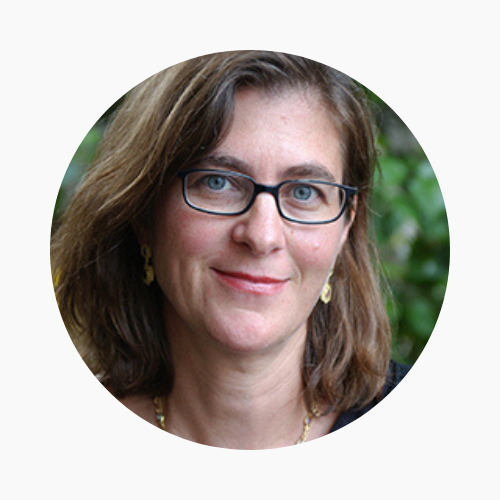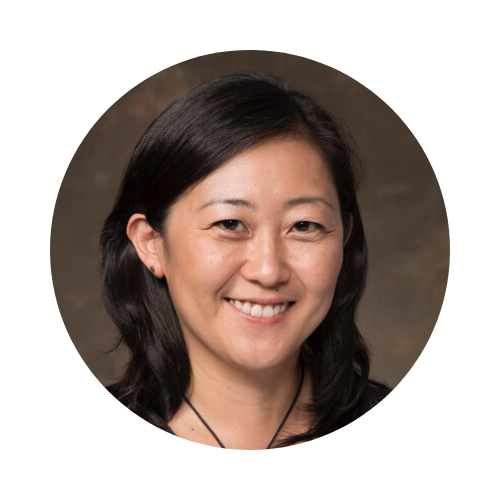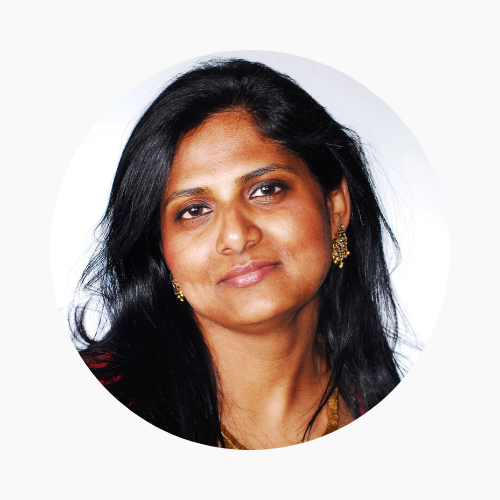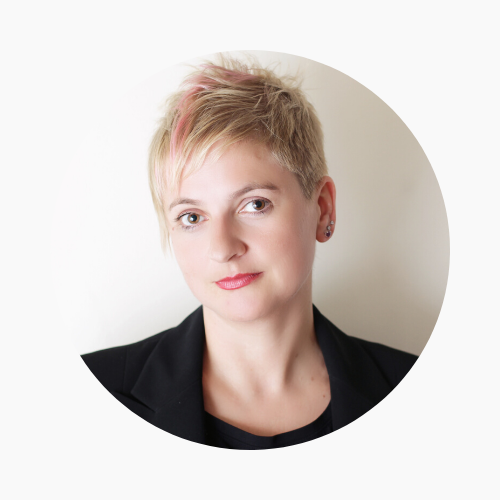We are so excited to welcome these incredible women in physics to CUWiP 2020@Yale. To learn more about each of these women, click the links in their biographies.
Plenary Speakers
 |
Melissa Franklin “Melissa Franklin is an experimental particle physicist who studies proton-proton collisions produced by Large Hadron Collider(LHC). She is a collaborator on the ATLAS experiment at the LHC where she works in collaboration with over 3000 physicists. Franklin was co-discoverer of the top quark and the Higgs boson. She is presently studying the properties of the Higgs boson and searching for new physics beyond the Standard Model. Professor Franklin, born and raised in Canada, received her B.Sc. from the University of Toronto and her Doctorate from Stanford University. She worked as a post-doctoral fellow at Lawrence Berkeley Lab, was an assistant professor at the University of Illinois in Champagne/Urbana and was a Junior Fellow in the Society of Fellows at Harvard, before joining the Harvard faculty in 1989. In 1992 she became the first woman to receive tenure in the Physics department and she served as Chair of the Physics department from 2010-2014” (Department of Physics Website, Harvard University) |
 |
Louise Edwards After four wonderful years having been a lecturer in the Yale Astronomy Department, Dr. Louise Edwards joined the Cal Poly San Luis Obispo Physics faculty as an assistant professor. Previously, she held postdoctoral positions at the California Institute of Technology’s Infrared Processing and Analysis Center and at Trent University. She received her PhD in Physics from Laval University in Quebec, Canada in 2007. Optical and infrared spectroscopy, along with photometric data from X-ray, through to Radio wavelengths allow Dr. Edwards to study the formation and evolution of galaxies. She is particularly interested in the cores and infall regions of rich galaxy clusters - objects she began studying during an undergraduate summer internship at the Hertzberg Institute of Astrophysics in Victoria, BC. (more information) |
 |
Andrea Liu (APS Keynote) Andrea Liu is a theoretical soft and living matter physicist who received her A. B. and Ph.D. degrees in physics at the University of California, Berkeley, and Cornell University, respectively. She was a faculty member in the Department of Chemistry and Biochemistry at UCLA for ten years before joining the Department of Physics and Astronomy at the University of Pennsylvania in 2004. Liu is currently Speaker-Elect of the Council of the American Physical Society (APS) and Chair-Elect of the Physics Section of the American Association for the Advancement of Science (AAAS). She is a fellow of the APS, AAAS and the American Academy of Arts and Sciences, and a member of the National Academy of Sciences. |
 |
Reina Maruyama Professor Reina Maruyama is exploring new physics in nuclear and particle astrophysics, in particular, in dark matter and neutrinos. Her group is carrying out direct detection of dark matter experiments in terrestrial-based detectors and searches for neutrinoless double beta decay. The current experiments include COSINE-100 located at the Yangyang Underground Laboratory in South Korea, DM-Ice, and IceCube located at the South Pole, and CUORE, located at Gran Sasso, Italy, and HAYSTAC at Yale. |
“This Is How I Got Here” Panelists
 |
Sophia Suarez Dr. Sophia Suarez is an Associate Professor in the Physics Department at Brooklyn College in the City University of New York (CUNY) and a member of the CUNY Graduate Center Doctoral Faculty in Physics. She received her BA/MA in Physics from Hunter College (1998) and her Ph.D. in Experimental Condensed Matter Physics from the CUNY Graduate Center (2004). She spent two and a half years in the Chemistry Division at the US Naval Research Laboratory in Washington, DC, as a National Research Council (NRC) post-doc fellow. Her research is focused on the use of NMR and Impedance Spectroscopy to study the ion and molecular transport in various types of materials, mainly with application in electrochemical devices such as fuel cells. |
 |
Jacquelynn Garofano Jacquelynn Garofano is program manager of the Margaret Ingels Engineering Development Program at United Technologies, a two-year, entry-level leadership development program for top engineering talent. She began her career as a research scientist at United Technologies Research Center in 2011, where she worked to solve technical challenges, provide failure investigation and develop innovative technologies for the aerospace and building industries, leveraging her materials engineering expertise. Jackie earned her bachelor’s in physics with honors from Southern CT State University and master’s and doctoral degrees in materials science and engineering from the University of Connecticut. Her past research interests include advanced materials characterization of laser processed aerospace alloys and microstructural evolution of ceramic oxide nanocomposites. She has eleven technical publications to her credit, two U.S. patent awards and is an active member of the Society of Women Engineers. She was named a 2011 Women of Innovation by the Connecticut Technology Council and named 40 Under Forty by Connecticut Magazine and Hartford Business Journal. |
 |
Priyamvada Natarajan Priyamvada Natarajan, is an astrophysicist and Professor at Yale with a joint appointment in the Astronomy and Physics departments. She has made seminal contributions to our current understanding of the formation and growth of black holes and of the nature of dark matter by mapping it using gravitational lensing. Recipient of many awards & honors including the Guggenheim and Radcliffe fellowships, Priya is the chair of the Division of Astrophysics of The American Physical Society and currently serves on the national Astronomy & Astrophysics Advisory Committee that advises NASA, NSF and DoE. She is also the author of the critically acclaimed book Mapping the Heavens: The Radical Scientific Ideas that Reveal the Cosmos. She and her work have been featured in many news outlets including the New York Times, Quartz, BBC, CNN, New York Review of Books, PBS-NOVA, NPR, Science Friday and Quanta Magazine to name a few. Deeply interested in inter-disciplinary scholarship, she is at present the Director of the Franke Program in Science and the Humanities. Interested in the creative process in science and art, she collaborates with artists and her current VR experience piece LUNATICK with the sculptor Sir Antony Gormley and Acute Art UK that was on view at the Venice Biennale in 2019. |
 |
Alia Jackson Alia Jackson earned her BA in Physics from SUNY Plattsburgh and Master of Arts in Teaching in Physics from Stony Brook University. She is in her thirteenth year at Curtis High School, on Staten Island, NY, teaching International Baccalaureate Physics. In addition to her teaching responsibilities, Mrs. Jackson mentors the Astronomy Research Club in collaboration with Rooftop Variables at Columbia University, as well as the Cancer Awareness Club. She is also an Adjunct Professor with the Astronomy Department at the College of Staten Island. Recent professional projects include research with Columbia University, Cornell University, the Maria Mitchell Observatory in Nantucket, MA, and James Cook University in Queensland, Australia, preparing several academic papers for publication, and presentations at American Astronomical Society meetings and the Partners in Science National Conference. As a NYS Master Teacher emeritus, and a current Math for America Master Teacher, she has co-facilitated the Astronomy Professional Learning Team (PLT) for 3 years, as well as facilitated a 3-D Printing in the Classroom PLT. She was awarded the 2011 Sloan Award for Excellence in Teaching Math and Science teachers, as well as being recognized as the 2017 Teacher of the Year by her local State Senator. Passionate about astronomy, Mrs. Jackson constantly encourages her 2 young children, students, friends, and fellow teachers to ‘LOOK UP!’ |
 |
Ágnes Mócsy Ágnes Mócsy is a Professor of Physics and Astronomy at the Pratt Institute, Brooklyn, NY. She is a Fellow of the American Physical Society and Yale Presidential Visiting Fellow 2018/19. Previously, Ágnes held positions at the Niels Bohr Institute in Copenhagen, Denmark, as Alexander von Humboldt Fellow at the Goethe University in Frankfurt, Germany, at the RIKEN-BNL Center at Brookhaven National Laboratory, Upton, NY, and held visiting appointments at École Polytechnique and CEA Saclay in Paris, France and at Wright Lab/Physics Department at Yale University. Ágnes made significant contributions in high energy nuclear physics, in particular in the theory and phenomenology of strong interactions, investigating how matter formed microseconds after the Big Bang. Her current research explores the intersection and deep connection of science and the arts, and that of the gender and racial landscape and inclusivity in science and beyond. She is also a documentary filmmaker, had written to the Huffington Post, has been collaborating with artists in various mediums, designing novel ways for physics education, producing and performing science inspired fashion and art shows, and is a sought after public science communicator. |